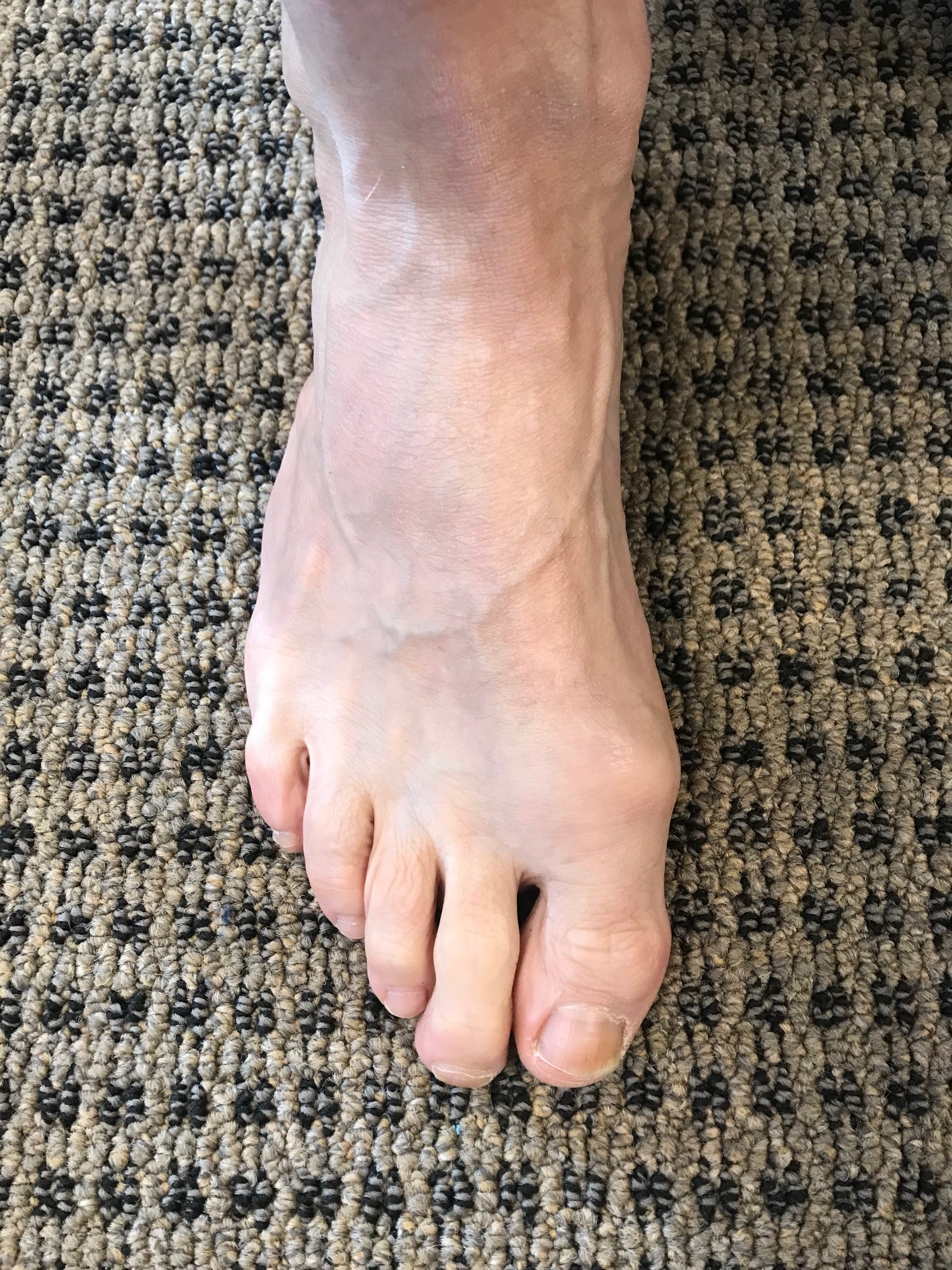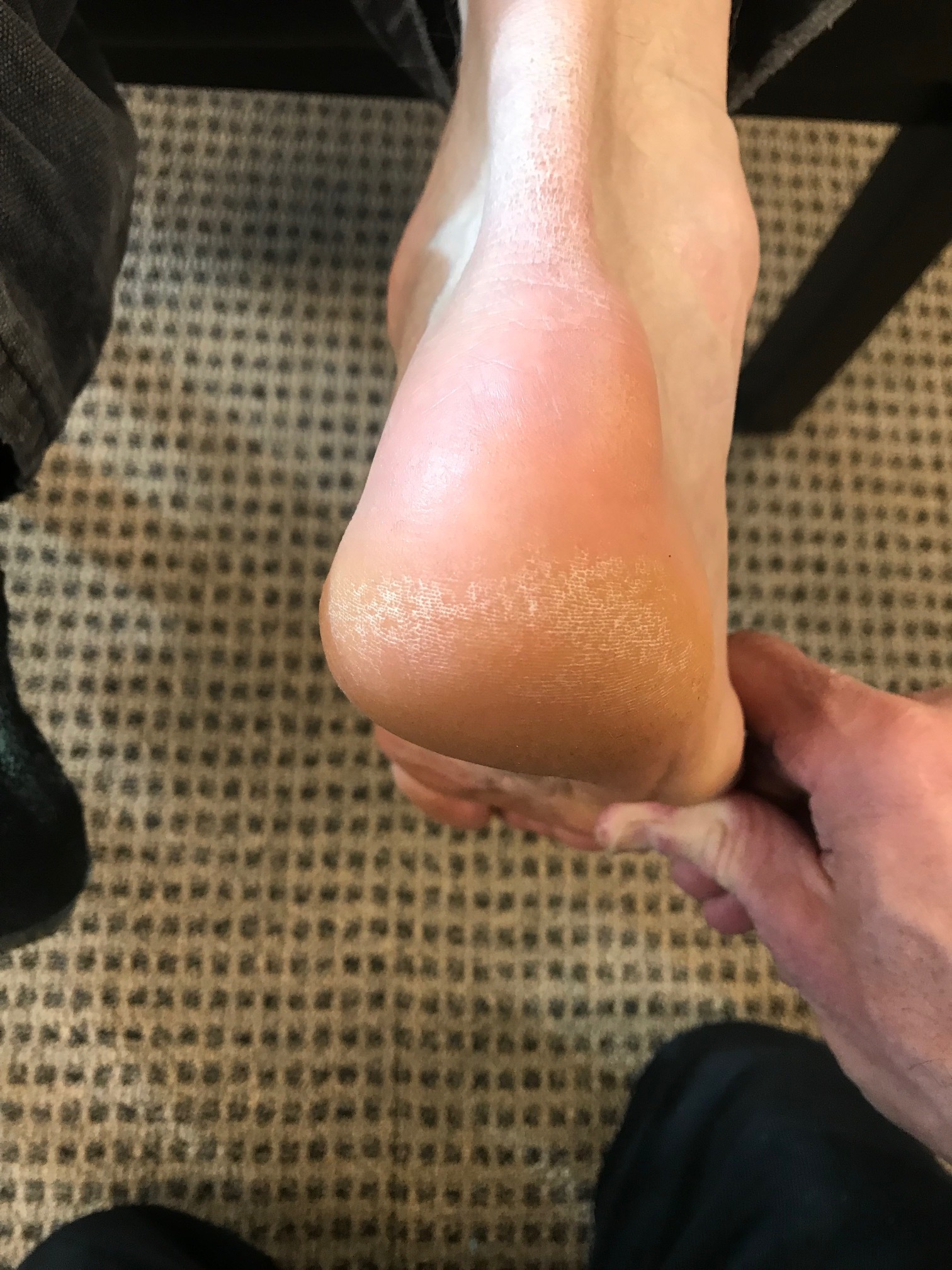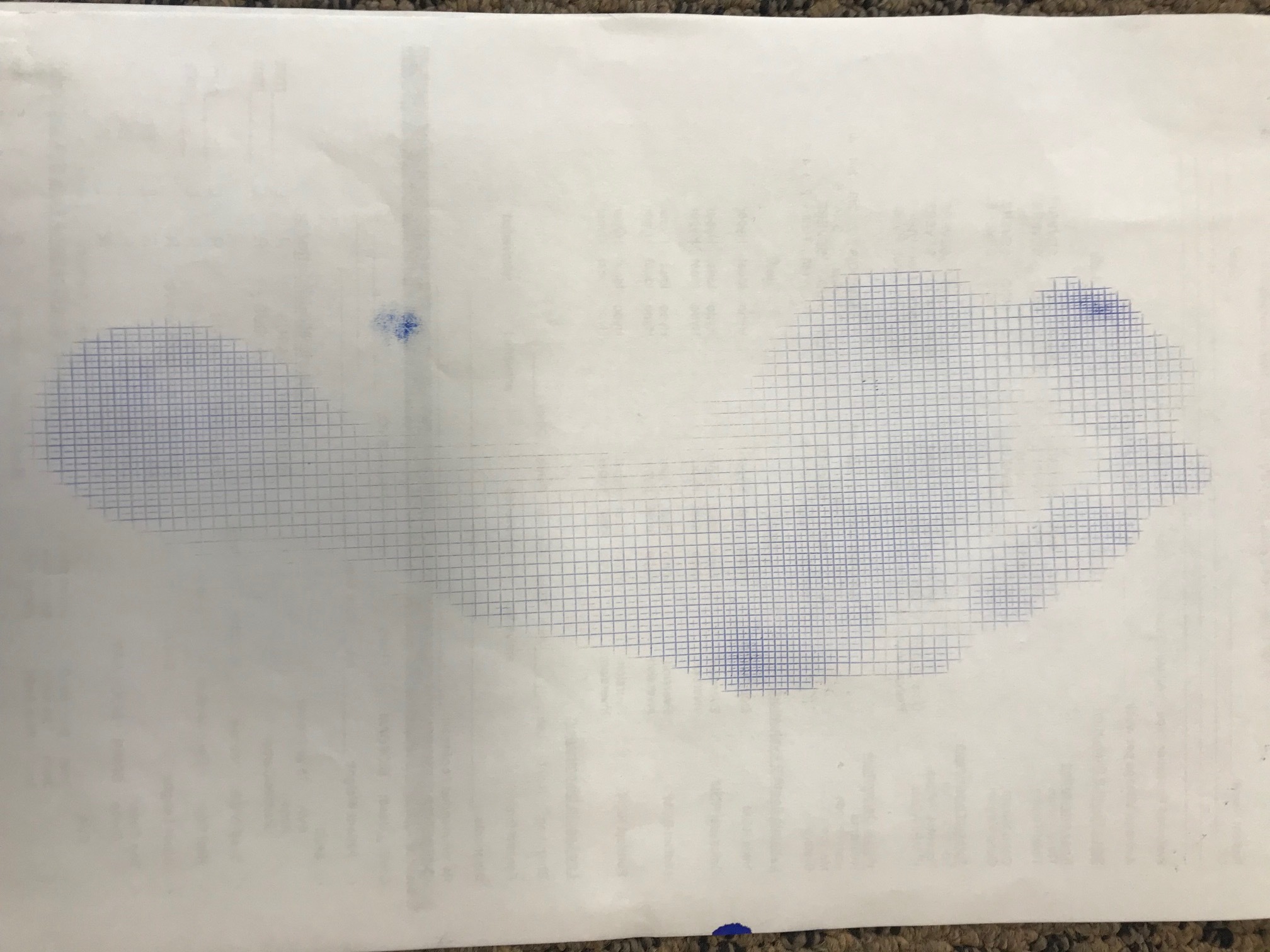Inability to descend the distal first ray = bunion

 Take a look at this classic example a bunion.
Take a look at this classic example a bunion. A bunion occurs because of the untoward action of the adductor hallucis. Normally, when the distal first ray is anchored, it contributes to the transverse and medial longitudinal arches of the foot as well as applying compressive forces across the articulations of the foot and providing stability and helping with supination. When the first ray is not anchored, the adductor pull the hallux laterally. This changes the axis of the first metatarsophalangeal joint moving it dorsally and posteriorly, limiting great toe dorsiflexion. It also applies an abductory force proximal phalanx, which, overtime, contributes to bunion.
 A forefoot supinatus or a forefoot varus are two common causes for people to not be able to anchor the first ray to the ground. This gentleman, with a forefoot supinatus, cannot anchor it. Look at his pedograph and notice the lack of ink/printing underneath the head of the distal first metatarsal. This is a classic finding with this problem.
A forefoot supinatus or a forefoot varus are two common causes for people to not be able to anchor the first ray to the ground. This gentleman, with a forefoot supinatus, cannot anchor it. Look at his pedograph and notice the lack of ink/printing underneath the head of the distal first metatarsal. This is a classic finding with this problem.The fix?
Needling of muscles as well as supportive exercises to help descend the first ray complex such as those involving the extensor hallucis brevis, short flexors of the toes and peroneus longus work awesome. Head over to the Vimeo channel to see some examples.
Keep on needling
Dr. Ivo
#bunion #halluxvalgus #halluxabductocalgus #1stray #firstray